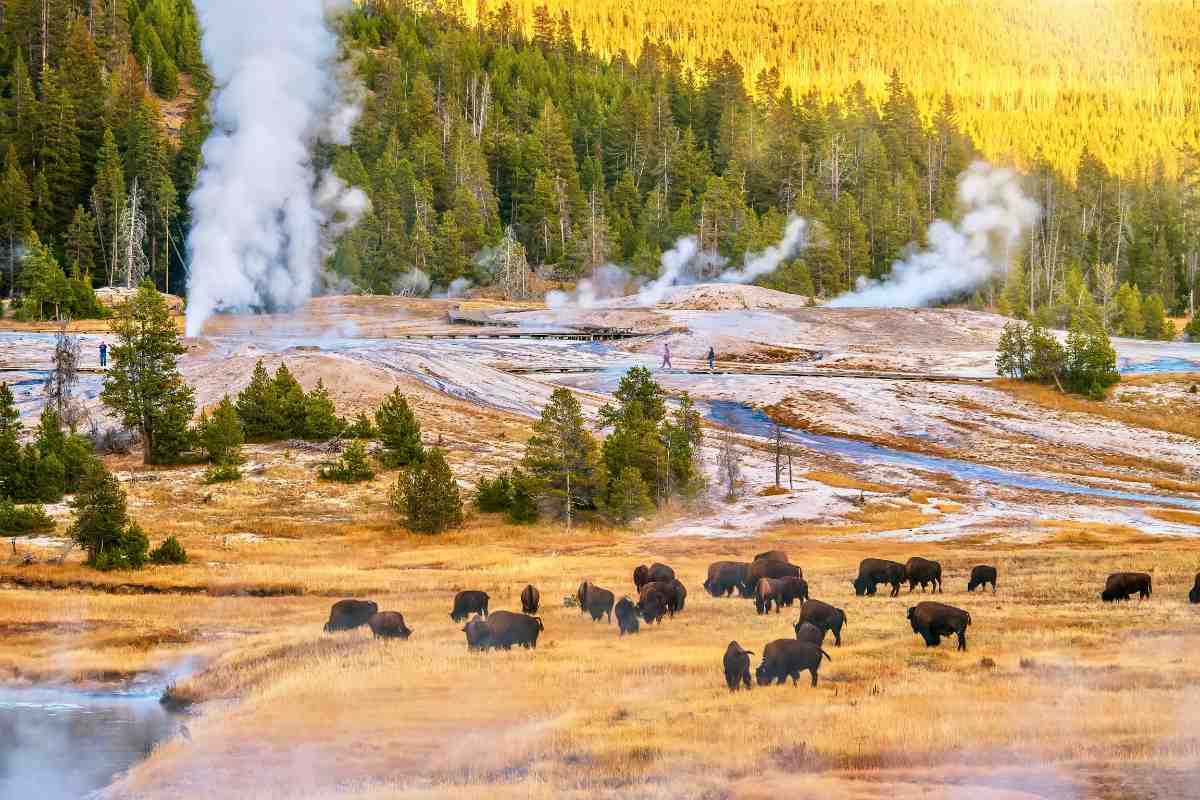Are you looking to immerse yourself in the captivating splendor of West Yellowstone, Montana? Serving as the gateway to the illustrious Yellowstone National Park, West Yellowstone is an alluring town teeming with mesmerizing wildlife, awe-inspiring landscapes, and vibrant culinary delights. Whether you’re considering when to visit, which attractions to explore, what to pack, or where to indulge your taste buds, this comprehensive guide covers it all and more. Let’s embark on this adventure!
Table of Contents
When is the Best Time to Visit West Yellowstone?
Determining the optimal time to visit West Yellowstone depends largely on the experiences you seek. Summer months (June to August) are ideal for hiking, wildlife watching, and fishing, with warm temperatures and open park roads ensuring an unforgettable journey. If winter activities like snowmobiling and cross-country skiing are more your speed, consider visiting during the colder months from December to March.
For those looking to avoid crowds and bask in the tranquil beauty of wildlife sightings and outdoor fun, the shoulder seasons of spring (April and May) and fall (September and October) present an excellent opportunity. For more specific climate information, refer to the West Yellowstone weather guide.
What are the Must-See Attractions in and Around West Yellowstone?
Yellowstone National Park, with its iconic attractions like the Old Faithful Geyser, the Grand Prismatic Spring, and the Grand Canyon of Yellowstone, is an unmissable site. For a deeper understanding of the area’s history, consider visiting the Yellowstone Historic Center.
Located just outside the park, the Grizzly and Wolf Discovery Center provides intimate encounters with these majestic creatures, while teaching about their role in the ecosystem.
What Wildlife Can I Expect to See and How Can I Safely Observe Them?
Bison, elk, wolves, and grizzly bears are a common sight in West Yellowstone. Maintain a safe distance of at least 100 yards from bears and wolves and 25 yards from all other wildlife. Equip yourself with binoculars or a telephoto lens for closer views. Remember, feeding wildlife is not only illegal but potentially dangerous. For more tips, check out the National Park Service’s wildlife viewing guidelines.
How Should I Prepare for West Yellowstone's Weather?
The weather in West Yellowstone can be dynamic, with sunny summer days reaching 70s and 80s (Fahrenheit), and winter temperatures often dipping below freezing. Spring and fall showcase a mixture of sunshine, rain, and occasional snow. Dressing in layers helps accommodate fluctuating temperatures. Rain jackets, comfortable shoes, sun protection, and cold-weather gear for winter visits are must-haves.
Are There Any Local Events or Festivals During My Visit?
The West Yellowstone events calendar is filled with exciting happenings throughout the year. March features the Winter Snowmobile Expo, while May hosts the Mountain Man Rendezvous. Summer sees a spectacular Fourth of July Parade and Fireworks, along with the Wild West Yellowstone Rodeo. The Yellowstone Ski Festival in November kicks off the winter season.
Where Can I Savor Local Cuisine?
Satisfy your palate with authentic local flavors at the Madison Crossing Lounge, revered for its wild game and locally-sourced trout. The Running Bear Pancake House, a local staple since 1962, serves delectable breakfast and lunch. For dinner with a historical backdrop, visit The Branch Restaurant and Bar, located in the historic 1908 Union Pacific Dining Lodge.
Can You Recommend Any Lesser-Known Spots or Activities?
Venture off the beaten path to discover hidden gems of West Yellowstone. Hebgen Lake, a haven for boating and fishing, is tucked just outside of town. The Purple Mountain Trail, though lesser-known, offers magnificent panoramic views to hikers.
For a thrilling winter escapade, explore dog sledding with local outfitters like Spirit of the North. History buffs will appreciate the Earthquake Lake Visitor Center, detailing the dramatic formation of Earthquake Lake in 1959.
Concluding Thoughts
Beyond serving as the threshold to America’s first national park, West Yellowstone harbors a plethora of experiences. Its dynamic wildlife, a broad spectrum of outdoor activities, rich historical context, and an array of regional cuisine make it an unforgettable destination. No matter when you choose to visit, West Yellowstone promises a journey of exploration and exhilaration!


